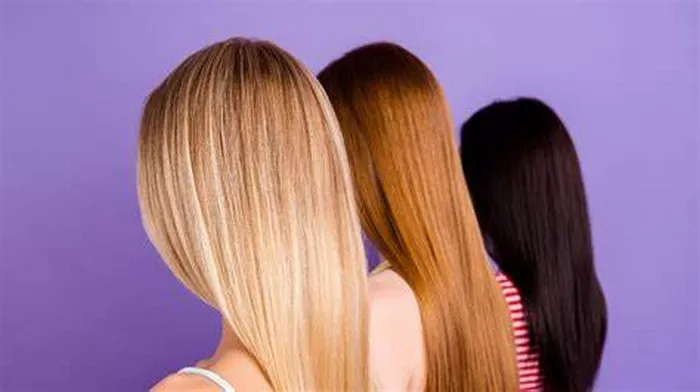Hair dyeing has become a popular fashion statement and a means of self-expression for many people. However, this beauty routine can sometimes lead to unwanted hair loss. If you’re experiencing hair loss after dyeing your hair, it’s crucial to understand the underlying causes and implement effective solutions to maintain healthy hair.
Understanding the Causes of Hair Loss After Dyeing
Chemical Damage
Hair dye contains various chemicals, such as ammonia, peroxide, and resorcinol, which can weaken the hair shaft and scalp. These chemicals can strip away natural oils and proteins, leading to hair becoming brittle and prone to breakage.
Allergic Reactions
Some individuals may have allergic reactions to the ingredients in hair dye. Symptoms can include itching, redness, swelling, and in severe cases, hair loss. It’s essential to conduct a patch test before applying hair dye to ensure you’re not allergic to any components.
Overprocessing
Frequent dyeing or using high-volume developers can overprocess the hair. This overprocessing strips the hair of its natural moisture and elasticity, making it more susceptible to damage and breakage.
Inadequate Aftercare
Failing to provide proper aftercare following hair dyeing can exacerbate hair damage. Using harsh shampoos, not conditioning adequately, and exposing dyed hair to excessive heat can all contribute to hair loss.
Effective Solutions to Prevent Hair Loss After Dyeing
Pre-Dyeing Care
Choose the Right Dye
Opt for hair dyes that are free from harsh chemicals like ammonia and peroxide. Semi-permanent or natural dyes such as henna can be gentler alternatives.
Conduct a Patch Test
Always perform a patch test before dyeing your hair to check for any allergic reactions. Apply a small amount of the dye to a patch of skin and wait 24-48 hours to ensure there’s no adverse reaction.
Deep Conditioning Treatment
Prepare your hair by doing a deep conditioning treatment a week before dyeing. This helps to strengthen the hair and minimize damage during the dyeing process.
During Dyeing
Follow Instructions Carefully
Always follow the instructions provided with the hair dye. Overlapping applications or leaving the dye on for too long can cause excessive damage.
Protect Your Scalp
Apply a protective barrier cream around your hairline to prevent the dye from coming into direct contact with your skin, reducing the risk of irritation and allergic reactions.
Post-Dyeing Care
Gentle Shampooing
Use a sulfate-free, color-safe shampoo to cleanse your hair. Sulfates can strip away the dye and natural oils, leading to dryness and breakage.
Condition Regularly
Condition your hair after every wash with a moisturizing conditioner. This helps to restore hydration and maintain the hair’s elasticity.
Avoid Heat Styling
Limit the use of heat styling tools such as blow dryers, straighteners, and curling irons. If you must use them, apply a heat protectant spray to minimize damage.
Use Leave-In Treatments
Incorporate leave-in conditioners and serums into your hair care routine. These products provide extra moisture and protection, helping to keep your hair healthy.
Healthy Hair Habits
Regular Trims
Get regular trims to remove split ends and prevent further damage. This can help in maintaining the overall health and appearance of your hair.
See Also: How Long Do Alopecia Injections Last: What You Need to Know
Balanced Diet
Maintain a balanced diet rich in vitamins and minerals essential for hair health. Nutrients like biotin, vitamin E, zinc, and iron play a crucial role in strengthening hair follicles.
Hydration
Drink plenty of water to keep your body and hair hydrated. Hydrated hair is less prone to dryness and breakage.
Treatments for Damaged Hair
Protein Treatments
Protein treatments can help repair and strengthen damaged hair by replenishing lost proteins. Use a protein treatment once a month to maintain the hair’s strength and structure.
Scalp Massages
Regular scalp massages can stimulate blood circulation and promote hair growth. Use essential oils like rosemary or peppermint, which are known to enhance hair health.
Natural Remedies
Natural remedies such as aloe vera, coconut oil, and egg masks can provide nourishment and hydration to damaged hair. These ingredients are rich in vitamins and proteins that help repair and strengthen hair.
Professional Help
Consulting a Trichologist
If hair loss persists despite your efforts, it may be beneficial to consult a trichologist, a specialist in hair and scalp health. They can provide personalized treatment plans and identify any underlying issues contributing to hair loss.
Professional Treatments
Keratin Treatments
Keratin treatments can help restore the hair’s natural protein, making it stronger and less prone to damage. This treatment can be particularly beneficial for chemically treated hair.
Laser Therapy
Low-level laser therapy (LLLT) is a non-invasive treatment that stimulates hair follicles and promotes hair growth. This therapy can be an effective solution for those experiencing significant hair loss.
Conclusion
Preventing hair loss after dyeing requires a comprehensive approach, from selecting the right dye and following proper dyeing techniques to implementing a robust aftercare routine and adopting healthy hair habits. By understanding the causes of hair loss and taking proactive steps, you can enjoy beautiful, dyed hair without compromising its health. If hair loss persists, seeking professional help can provide further solutions to maintain strong and vibrant hair.


